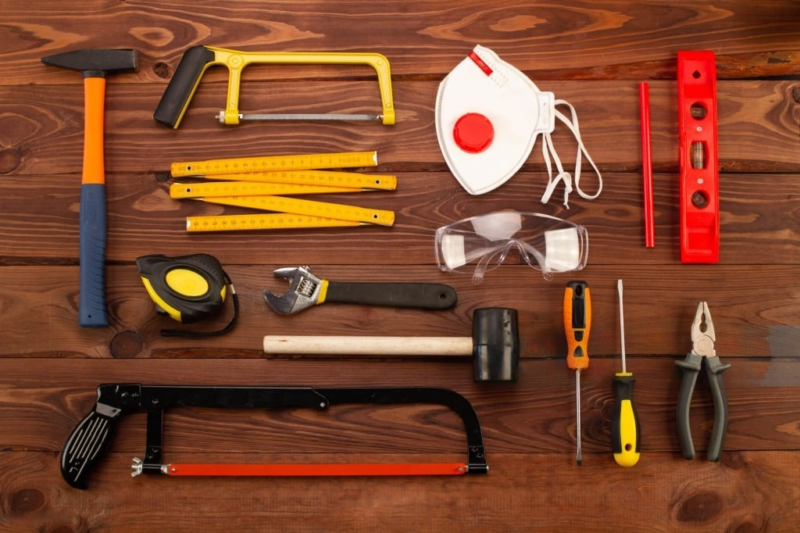Wood carving for beginners is more than simply a pastime. It’s a hands-on method to engage in craftsmanship, creativity, and even leisure. Whether you want to produce personalized wood carvings or simply love shaping wood into beautiful designs, the first step is to gather the necessary equipment. The proper wood carving tools can mean the difference between frustration and satisfaction.
In this lesson, we’ll look at the ten essential woodworking tools that every beginner should have. We’ll go over what each tool does, how it helps, and why it’s so vital for your carving development. We’ll also discuss safety, sharpening, and how to build your kit step by step.
Why the Right Tools Matter in Wood Carving for Beginners
Starting with the right tools saves time, effort, and avoids injury. Without sharp, high-quality equipment, it is difficult to master technique. It’s even more difficult to generate clean cuts and tiny details.
Many new woodworkers believe they need dozens of tools straight away. What’s the truth? You simply need a few key ones to get started.
Let’s dive into them.
1. Carving Knives
Your Go-To Tool for Basic Cuts
Carving knives are the heart of every beginner’s kit. They’re used for whittling, shaping, and creating fine details.
What to look for:
- High carbon steel blades (they stay sharp longer)
- Ergonomic handles (comfortable grip reduces fatigue)
- Blade shapes: straight edge and curved blade for variety
Why it matters: A good carving knife helps you learn control. It’s the first tool you’ll reach for when shaping your first piece of wood.
2. Wood Carving Chisels
Versatile Tools for Roughing and Finishing
Chisels help remove large chunks of wood and refine shapes. A Wood Carving Chisel Set comes in different widths and profiles.
Recommended for beginners:
- Bevel-edged chisels
- Flat chisels in multiple sizes
- A basic starter set with 3 to 5 pieces
- Best use cases:
- Straight cuts
- Smoothing surfaces
- Adding depth
Pro Tip: Choose the best wood carving chisel set you can afford. Quality tools last longer and cut better.
3. Wood Carving Gouges
Perfect for Curves and Hollowing
Gouges resemble curved chisels. They are crucial for scooping out wood and making concave shapes.
Look for:
- Varying sweeps (degree of curve)
- Shallow and deep options
- Quality steel edges
Why you need them: Wood carving gouges are critical for relief carvings and curved forms. You’ll use them often, especially when working on bowls, spoons, or faces.
4. V-Tools
For Fine Lines and Detailed Work
V-tools include a sharp, V-shaped blade. They create narrow, precise grooves. This makes them ideal for textured and intricate patterns.
Best uses:
- Lettering
- Outlining designs
- Creating texture (fur, bark, fabric folds)
Even one good V-tool can greatly improve your ability to add life to your carvings.
5. Mallet
Power Behind the Tools
Mallets allow you to drive chisels and gouges deeper into hardwood. They provide control and power without hurting your instruments.
Types:
- Wooden mallets (gentle, traditional)
- Rubber mallets (soft strikes)
Why beginners need it: Using your hand to push tools works only for softwoods. For tougher jobs, a mallet saves your wrists and gets the job done faster.
6. Detailing Knife
Master the Finer Points
A detailing knife has a small, narrow blade. It’s designed for close-up work.
Key benefits:
- Precise cuts
- Sharp points for tight angles
- Smooth edges for delicate shapes
If you want your custom wood carvings to have personality and sharp lines, this tool is a must.
7. Chip Carving Knife
For Geometric Patterns and Designs
Chip carving involves removing little pieces of wood to produce shapes. A chip carving knife is short, sturdy, and precise.
Ideal for:
- Decorative borders
- Triangular cuts
- Celtic or floral patterns
You don’t need this tool right away, but it’s wonderful for when you’re ready to step up your job.
8. Sharpening Supplies
Sharp Tools = Safe Carving
Dull tools are dangerous. They slip, forcing you to apply greater pressure. This leads to accidents.
Must-haves:
- Sharpening stone
- Honing guide
- Leather strop with polishing compound
Learning how to sharpen your tools properly is part of being a great carver. It preserves your wood carving instruments in perfect condition.
9. Safety Equipment
Protect Yourself First
Wood carving requires sharp blades and flying chips. Wear the appropriate protective gear to stay safe.
Essentials:
- Cut-resistant gloves
- Safety goggles
- Dust mask or respirator
- Carving apron
Don’t skip this. One bad slip can ruin your project—or your hand.
10. Workbench or Carving Station
Keep Things Steady
A consistent workspace makes carving easier. You do not need a full workshop to get started. Even a strong table with a bench clamp is useful.
Recommended features:
- Non-slip surface
- Adjustable height
- Clamp or vise for holding wood
Having a steady workspace allows you to focus on your carving rather than balancing your project.
Bonus Tools to Expand Your Kit
Once you’ve mastered the basics, consider adding:
- Rasps and files: For smoothing and shaping
- Sandpaper: Finishing touches
- Burnishers: For polished surfaces
- Wood burners: Add fine texture and shading
As your skills grow, your toolbox will too.
Tips for Choosing Your First Wood Carving Chisel Set
With so many wood carving chisel sets available, it might be overwhelming. Here’s what you should look for:
Beginner-friendly sets should have:
- 4 to 8 pieces
- A mix of flat, V, and gouge tools
- Strong steel blades
- Handles that feel good in your hand
Stick to trusted brands. Quality matters more than quantity.
Start Small, Carve Often
Do not strive to learn everything at once. Choose a smaller project. Practice with each tool. Understand how wood behaves.
Try:
- Whittling a spoon
- Carving a leaf
- Making a small figurine
As you improve, try more advanced shapes and styles. Wood carving for beginners gets simpler with practice.
FAQs
1. What is the best wood for beginners to carve?
Basswood and butternut are soft and forgiving. They’re perfect for learning.
2. Do I need power tools to start wood carving?
No. Many beginners start with only hand tools. Power tools come later if needed.
3. How often should I sharpen my carving tools?
Sharpen tools after every few hours of use. Honing more frequently keeps edges razor sharp.
4. Are wood carving kits worth it?
Yes—if the kit comes from a reputable brand and includes high-quality tools. Avoid overly cheap sets.
5. What safety gear is most important?
Cut-resistant gloves and eye protection are a must. A dust mask is also key when sanding.
Final Thoughts
Beginning a wood carving journey is exciting. With the correct equipment and approach, you can make bespoke wood carvings to be proud of. Each cut teaches you something new. Every mistake is an opportunity to improve.
Invest in fundamentals. Practice frequently. Stay safe. And, most importantly, enjoy the process.
You do not need to be an artist to start. All you need is a sharp knife, a piece of wood, and some patience.

